Zone
Crash of a Pilatus PC-12/47 in Solemont: 4 killed
Date & Time:
Aug 24, 2012 at 1800 LT
Registration:
HB-FPZ
Survivors:
No
Schedule:
Antwerp - Saanen (Gstaad)
MSN:
702
YOM:
2006
Crew on board:
1
Crew fatalities:
Pax on board:
3
Pax fatalities:
Other fatalities:
Total fatalities:
4
Captain / Total hours on type:
1785.00
Circumstances:
The pilot took off from Anvers (Belgium) at around 14 h 40 bound for Saanen (Switzerland) where he was supposed to drop off his three passengers. The flight was performed in IFR then VFR, at a cruise altitude of 26,000 ft. After about 1 h 15 min of flight, still under IFR, the Geneva controller cleared the pilot to descend towards FL 210 and to fly towards Saanen with a view to an approach. A short time later, the radar data showed that the aeroplane deviated from the planned trajectory. Following a question from the controller, the pilot said he had an autopilot problem. The controller then asked the pilot to follow heading 165°, which the pilot read back, then asked him ‘‘are you okay, okay for the safety, it’s good for you? ‘‘. The pilot answered that he had a ‘‘big problem’’. The radar data show tight turns on descent. During these manœuvres, in reply to a request from the controller, the pilot said that he was in ‘‘total IMC’’. During this communication, the aeroplane‘s overspeed warning could be heard. The aeroplane was then descending at 15,500 ft/min. About ten seconds later, it was climbing at 15,500 ft/min. The right wing broke off about twenty seconds later. The indicated airspeed was then 274 kt and the altitude was 12,750 ft. The wreckage was found in woods in the commune of Solemont (25). A piece of the right wing was found about 2.5 km from the main wreckage. Some debris, all from the right wing, was found on a south-west/north-east axis. The aeroplane part that was furthest away was found 10 km from the main site. The aircraft disintegrated on impact and all four occupants were killed.
Probable cause:
The in-flight failure of the right wing was due to exceeding the aeroplane’s structural limits (ultimate loads) during loss of control by the pilot. In the absence of any flight recorders, the investigation was not able to determine the causes of this loss of control. It is possible that it may have been induced by a loss of situational awareness by the pilot at the controls of an aeroplane affected by an icing phenomenon. This phenomenon may have affected the aeroplane’s wings or an area around the roll control.
Final Report:


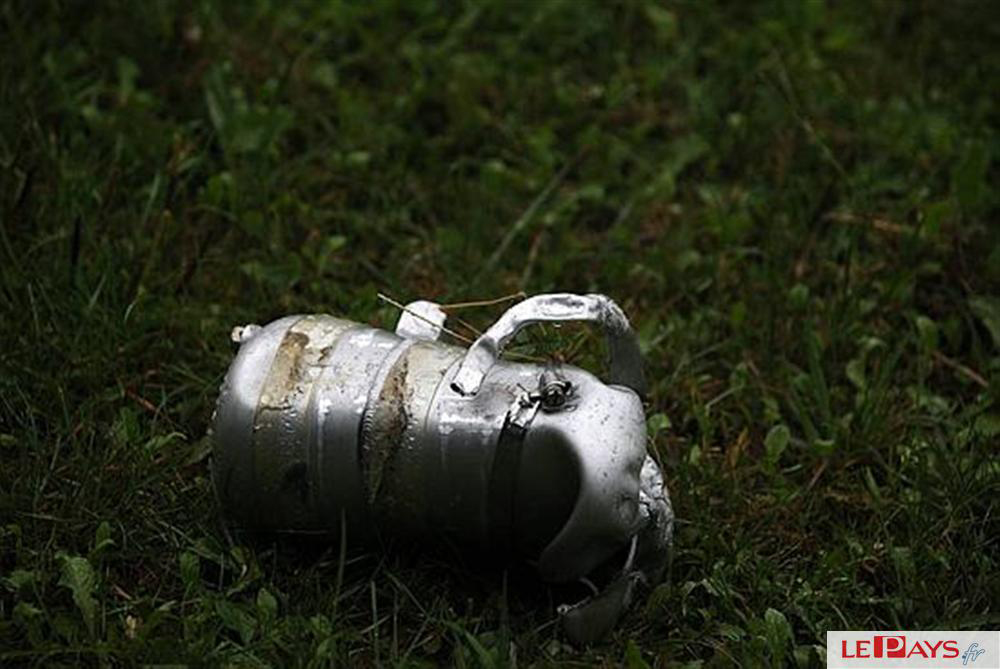
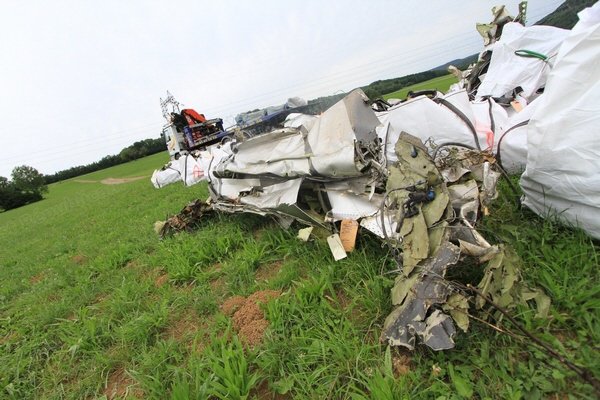
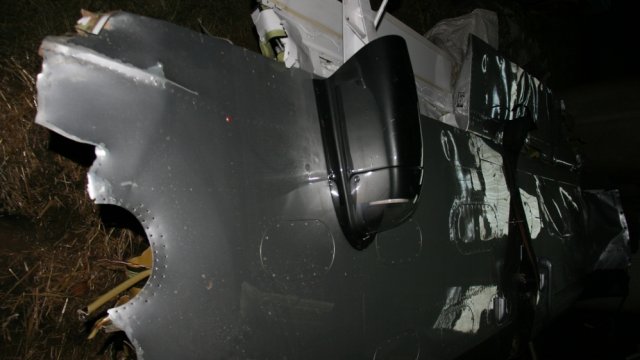
Crash of a Cessna 425 Conquest I in Leutkirch: 4 killed
Date & Time:
Dec 10, 1992 at 1656 LT
Registration:
D-ICEK
Survivors:
No
Schedule:
Antwerp - Leutkirch
MSN:
425-0055
YOM:
1981
Crew on board:
1
Crew fatalities:
Pax on board:
3
Pax fatalities:
Other fatalities:
Total fatalities:
4
Circumstances:
On final approach to Leutkirch-Unterzeil Airport, the twin engine aircraft entered an uncontrolled descent and crashed on a railway road located less than 500 metres short of runway 06 threshold. The aircraft was destroyed and all four occupants were killed.
Crash of a Piper PA-61P Aerostar (Ted Smith 601) in Antwerp: 4 killed
Date & Time:
Jun 2, 1990 at 1911 LT
Registration:
N4PC
Survivors:
No
Schedule:
Antwerp - Antwerp
MSN:
61-0743-8063365
YOM:
1980
Crew on board:
2
Crew fatalities:
Pax on board:
2
Pax fatalities:
Other fatalities:
Total fatalities:
4
Circumstances:
Delta Air Transport of Belgium arranged a Piper 601P Aerostar, N4PC, to shoot a promotion film. It was to fly in formation with an DAT Embraer 120 Brasilia near Antwerp Airport (ANW). The Brasilia, OO-DTH, departed Liège-Bierset Airport (LGG) at 17:57 and headed for Antwerp. Piper Aerostar N4PC took off from Antwerp at 18:43 and headed for Kallo, were both aircraft would join formation. It was agreed that the Aerostar would be on the left hand side of the EMB-120 because the camera crew was sitting on the right hand side of the Aerostar. After circling the city of Antwerp, the crew of OO-DTH contacted the Antwerp air traffic controller, stating his intentions to carry out a low pass over runway 29, followed by a high speed pass. The Aerostar would be alongside OO-DTH on both occasions. After that they would break and continued to Brussels. Antwerp Tower issued clearance at 19:06. At 19:08 OO-DTH radioed their plans to N4PC: "I am starting approach and descent. I am going over the runway. I will not make a touch and go, I will just pull up, left and then back high speed." The pilot of N4PC replied: "OK... I will go straight ahead". At 19:11 both aircraft made a low pass over runway 29 at a speed of 140 kts. OO-DTh was climbing away in a left turn when a mid-air collision occurred with N4PC. The tail of the Piper was sheared off and the aircraft crashed out of control near a railway line. All four occupants were killed. The Brasilia was able to make a safe emergency landing at Antwerpen.
Probable cause:
The collision was the consequence of the following factors:
- Misunderstanding between both crew due to a poor flight preparation, especially regarding the end of the mission and the evacuation of the area,
- The captain of the Embraer indicated he would pull up for climb then initiate a left turn while the pilot of the Piper indicated he would continue straight ahead, which caused the Piper to cut the trajectory of the Embraer that was flying on the right side of the Piper,
- The pilot of the Piper was seating in the left front seat in his cockpit so his position did not allow him to have a good overview of the situation and the exact position of the Embraer.
- Misunderstanding between both crew due to a poor flight preparation, especially regarding the end of the mission and the evacuation of the area,
- The captain of the Embraer indicated he would pull up for climb then initiate a left turn while the pilot of the Piper indicated he would continue straight ahead, which caused the Piper to cut the trajectory of the Embraer that was flying on the right side of the Piper,
- The pilot of the Piper was seating in the left front seat in his cockpit so his position did not allow him to have a good overview of the situation and the exact position of the Embraer.
Crash of a Mitsubishi MU-2G Marquise in Angoulême: 1 killed
Date & Time:
Aug 15, 1976
Registration:
OO-TBW
Survivors:
No
Schedule:
Angoulême - Antwerp
MSN:
526
YOM:
1970
Crew on board:
1
Crew fatalities:
Pax on board:
0
Pax fatalities:
Other fatalities:
Total fatalities:
1
Circumstances:
On takeoff at Angoulême-Brie-Champniers Airport, the twin engine airplane went out of control and crashed for unknown reasons. The aircraft was destroyed and the pilot, sole on board was killed. He was flying back to his base in Antwerp after dropping passengers flying from Antwerp.
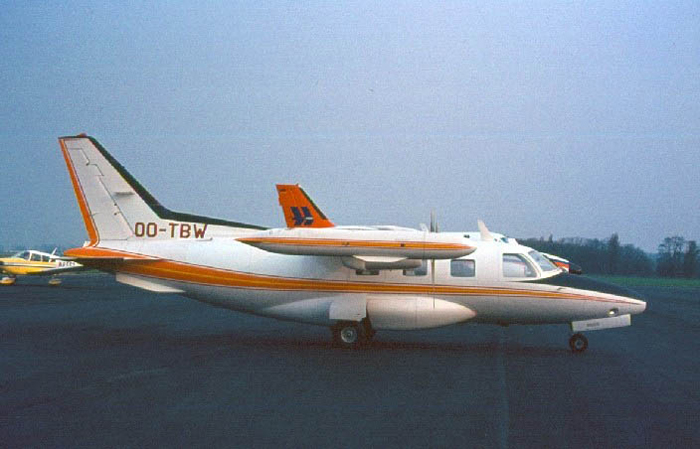
Crash of a Douglas DC-6B in Southend
Date & Time:
Oct 4, 1974 at 2001 LT
Registration:
OO-VGB
Survivors:
Yes
Schedule:
Southend - Antwerp
MSN:
43830/352
YOM:
1953
Crew on board:
6
Crew fatalities:
Pax on board:
99
Pax fatalities:
Other fatalities:
Total fatalities:
0
Captain / Total hours on type:
2000.00
Copilot / Total hours on type:
3000
Aircraft flight hours:
43017
Circumstances:
The aircraft landed at Southend (SEN) from Antwerp (ANR) at 07:50 hrs on a day excursion. Following a 9 hour rest period, the crew reported for duty at 18:30 to prepare for the return flight. Start up and taxiing out were normal, and a limited power check was completed before takeoff. The Captain, had given a full pre-takeoff briefing before the aircraft left Antwerp that morning, and on this occasion only called for a 'standard briefing', but emphasized that the full abort procedures would be as given during his previous instruction. The First Officer was handling the aircraft from the right hand seat, and gave a shortened takeoff briefing which included the actions required for engine failure before and after V1. Both pilots were wearing headsets, (not fitted with boom microphones) but were not using these for flight deck intercommunication purposes; the Flight Engineer was not wearing a headset. The Captain, who controlled the only source of nose-wheel steering, lined up the aircraft at the beginning of runway 24. Brakes were released and, after stabilizing all four engines at 30 inches of manifold pressure, the First Officer advanced all the right hand throttle levers to takeoff power. The Flight Engineer followed this movement with his left hand on the left-hand group of throttle levers and, when takeoff power was achieved, held the throttle friction lever with his right hand. The captain 's left hand was on the nose steering wheel. At about 75-80 knots, shortly before V1, the captain instructed the Flight Engineer to adjust the power on engines 1 and 2 which were overboosting slightly. The Flight Engineer made this adjustment coincident with the captain calling V1 at about 88 knots, and very shortly afterwards the captain saw the red 'gear unsafe' warning light illuminate. Unknown to the captain or the First Officer the Flight Engineer had made an UP selection of the landing gear selector lever. He stated subsequently that he thought the captain had instructed him to do so shortly after calling V1. The pilots maintain that no such order was given and that nothing additional to the normal procedural calls was said by either of them. The aircraft subsided on to its nose and its propellers struck the runway; throttles were closed and the captain attempted to maintain directional control by use of rudder. The aircraft came to rest 3 metres from the end of the runway with its nose on the ground and with the main landing gear still extended. As soon as the aircraft came to rest the Flight Engineer, having closed the mixture controls to idle cut off and pulled the 'ganged switches' bar, left the aircraft through the right front exit door. On seeing exhaust fires in Nos. 2 and 3 engines he returned to the flight deck and carried out the appropriate engine fire drills. However Nor 3 engine continued to burn, and he extinguished this fire with a portable CO2 appliance. During this period, evacuation drills were initiated, and the passengers left the aircraft in an expeditious and reasonably orderly manner, mostly through the front exit, but some by chute from the rear exit, and a few from an overwing emergency exit.
Probable cause:
The accident was caused by the Flight Engineer's action in selecting landing gear UP before the aircraft was airborne. He did this in the mistaken belief that the Captain had ordered him to do so.
Final Report:


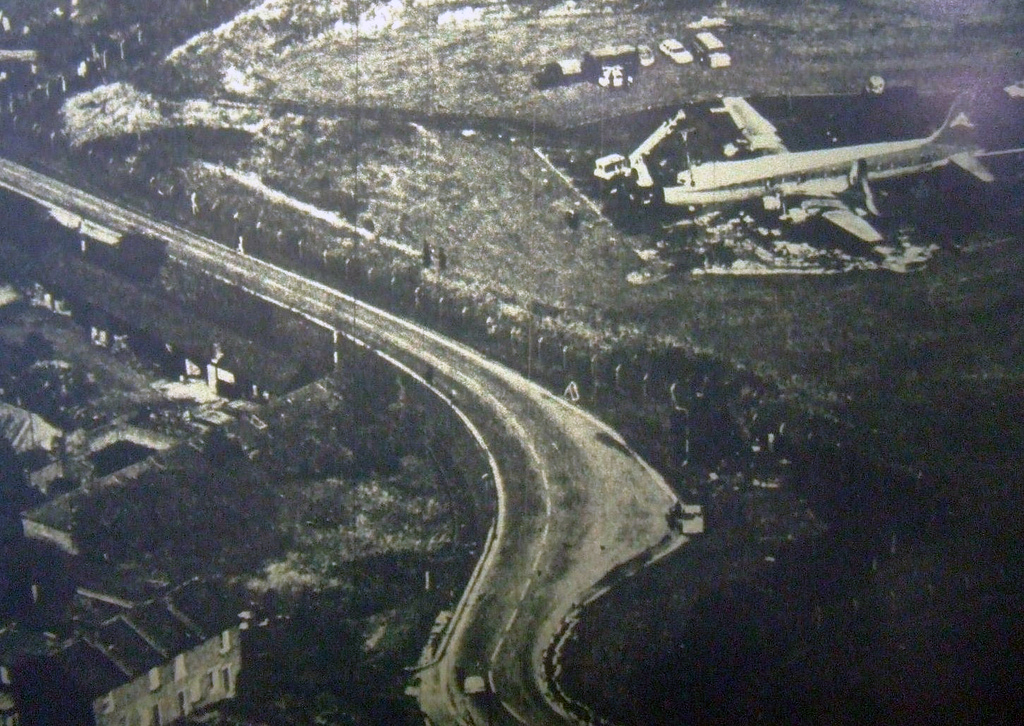

Crash of an Airspeed AS.10 Oxford at Chièvres AFB
Date & Time:
Oct 26, 1962
Registration:
OO-DEC
Survivors:
Yes
Schedule:
Lourdes – Antwerp
MSN:
2487
YOM:
1940
Crew on board:
2
Crew fatalities:
Pax on board:
1
Pax fatalities:
Other fatalities:
Total fatalities:
0
Circumstances:
The hydraulic system failed en route from Lourdes to Antwerp. The crew received the permission to divert to Chièvres AFB for an emergency landing. After touchdown, the brakes were inoperative. The aircraft veered off runway and eventually collided with a ground vehicle before coming to rest. There were no casualties but the aircraft was damaged beyond repair.
Probable cause:
Failure of the hydraulic systems.
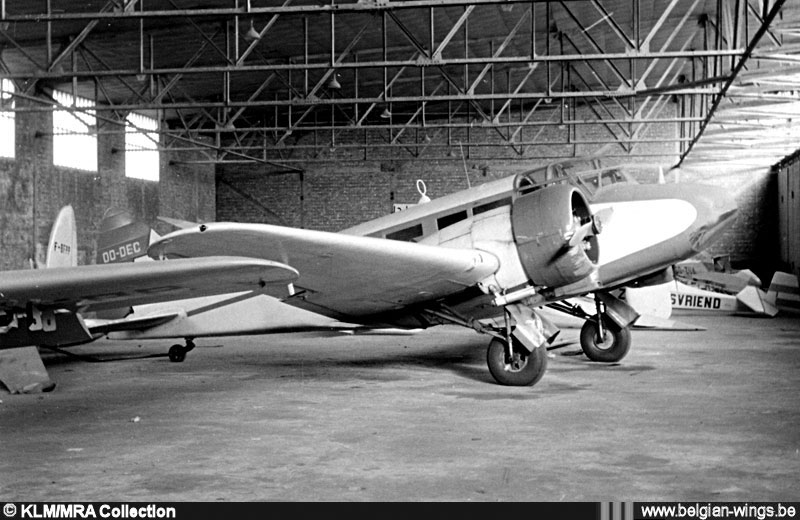
Crash fo a De Havilland DHC-2 Beaver AL1 off Zeebrugge: 1 killed
Date & Time:
Jan 24, 1962 at 1843 LT
Registration:
XP813
Survivors:
No
Schedule:
Antwerp – Manston
MSN:
1469
YOM:
1961
Crew on board:
1
Crew fatalities:
Pax on board:
0
Pax fatalities:
Other fatalities:
Total fatalities:
1
Circumstances:
En route from Antwerp to Manston, Kent, the single engine aircraft went out of control and crashed into the sea off Zeebrugge (WZC de Noordhinder). The pilot was killed and the aircraft was later recovered.
Crew:
WO2 S. Mousley, pilot.
Crew:
WO2 S. Mousley, pilot.
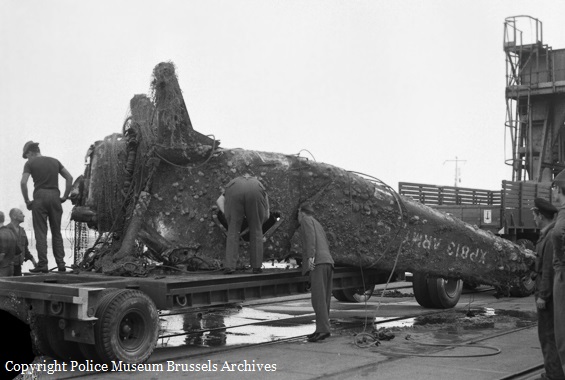
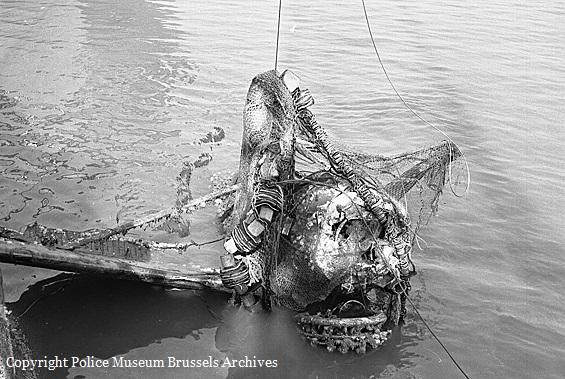
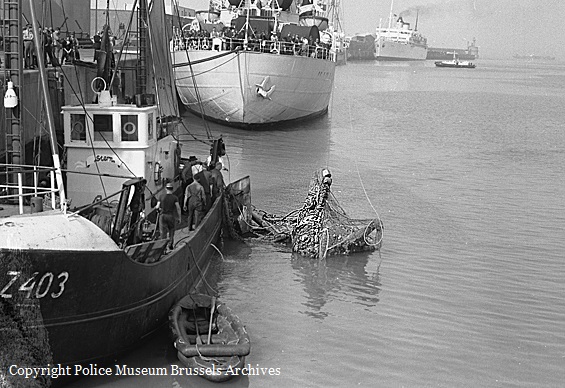
Crash of a Dornier DO.17Z-2 in Eindhoven: 4 killed
Date & Time:
Mar 26, 1941
Registration:
5K+?N
Survivors:
No
Schedule:
Antwerp - Eindhoven
MSN:
2534
Crew on board:
4
Crew fatalities:
Pax on board:
0
Pax fatalities:
Other fatalities:
Total fatalities:
4
Circumstances:
While on approach to Eindhoven Airport, the airplane crashed in unknown circumstances in Best, killing all four crew members.
Crew:
Lt H. Schramme, pilot,
Ogfr H. Stöver, observer,
Gfr M. Weisser, radio operator,
Gfr A. Limbeck, mechanic.
Crew:
Lt H. Schramme, pilot,
Ogfr H. Stöver, observer,
Gfr M. Weisser, radio operator,
Gfr A. Limbeck, mechanic.
Crash of a Dornier DO.17Z-3 in Nijmegen
Date & Time:
Nov 11, 1940 at 2330 LT
Registration:
5K+?M
Survivors:
Yes
Schedule:
Antwerp - Antwerp
MSN:
2890
Crew on board:
3
Crew fatalities:
Pax on board:
0
Pax fatalities:
Other fatalities:
Total fatalities:
0
Circumstances:
At night, the airplane ran out of fuel and crash landed near Nijmegen. All three crew members evacuated safely.
Probable cause:
Emergency landing due to fuel exhaustion.





